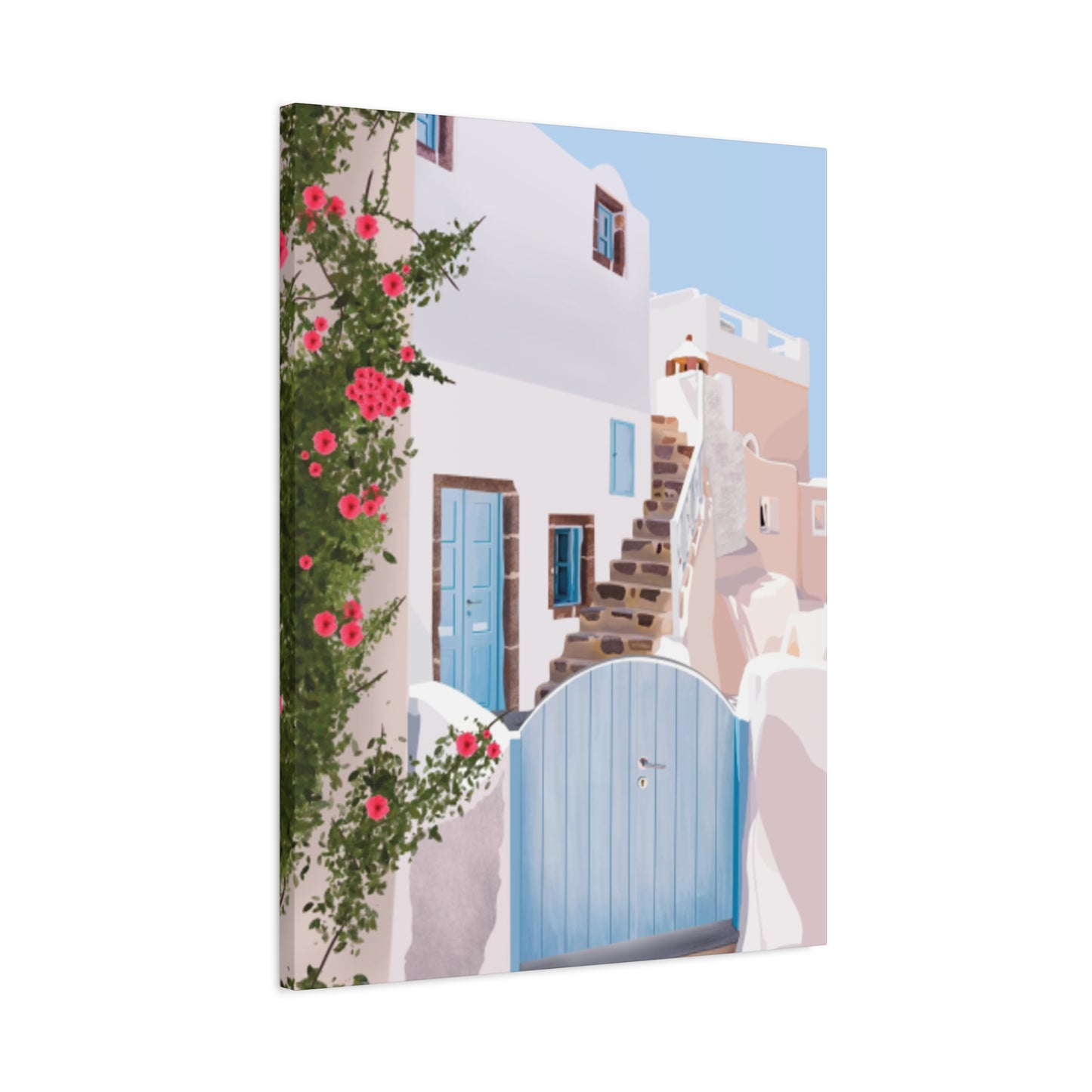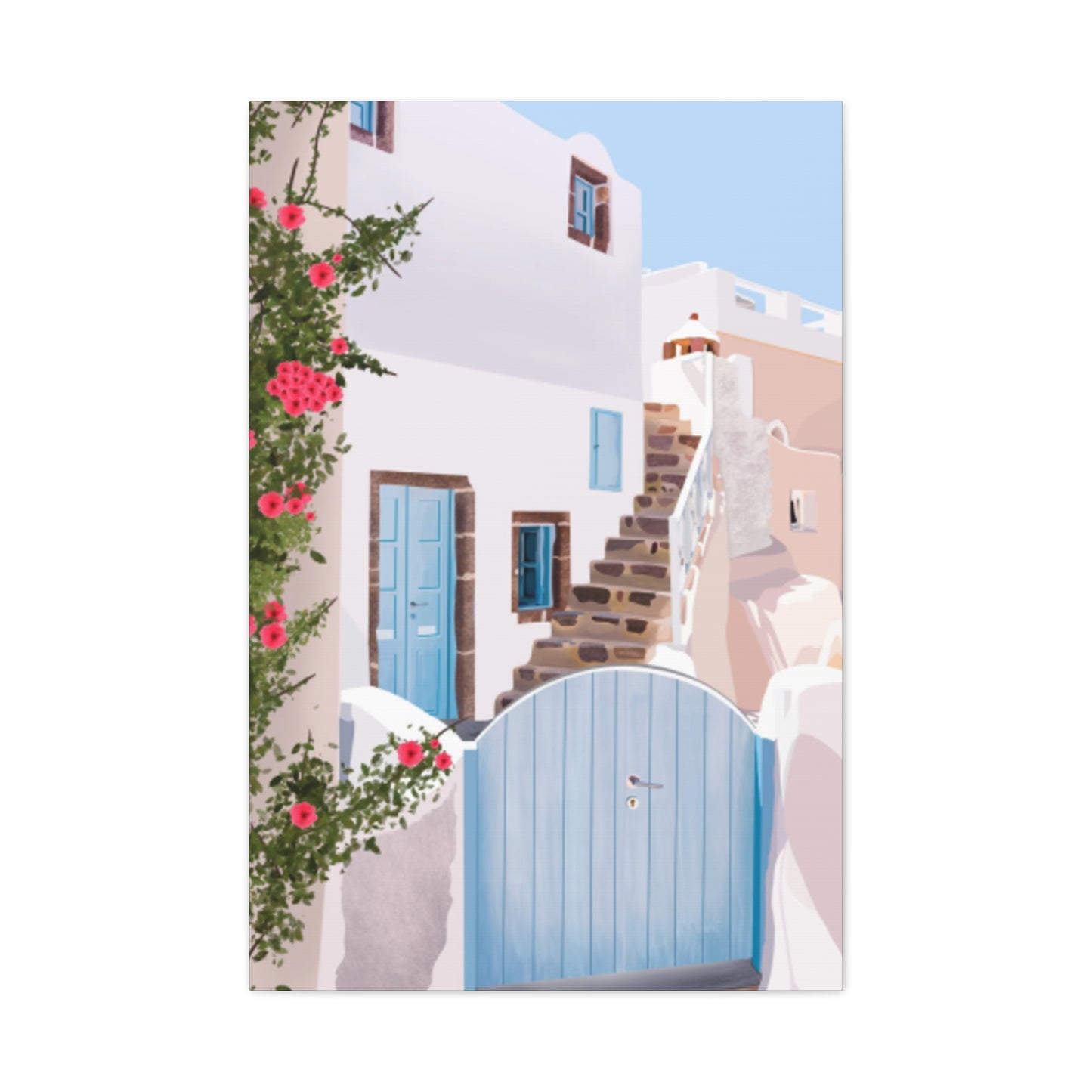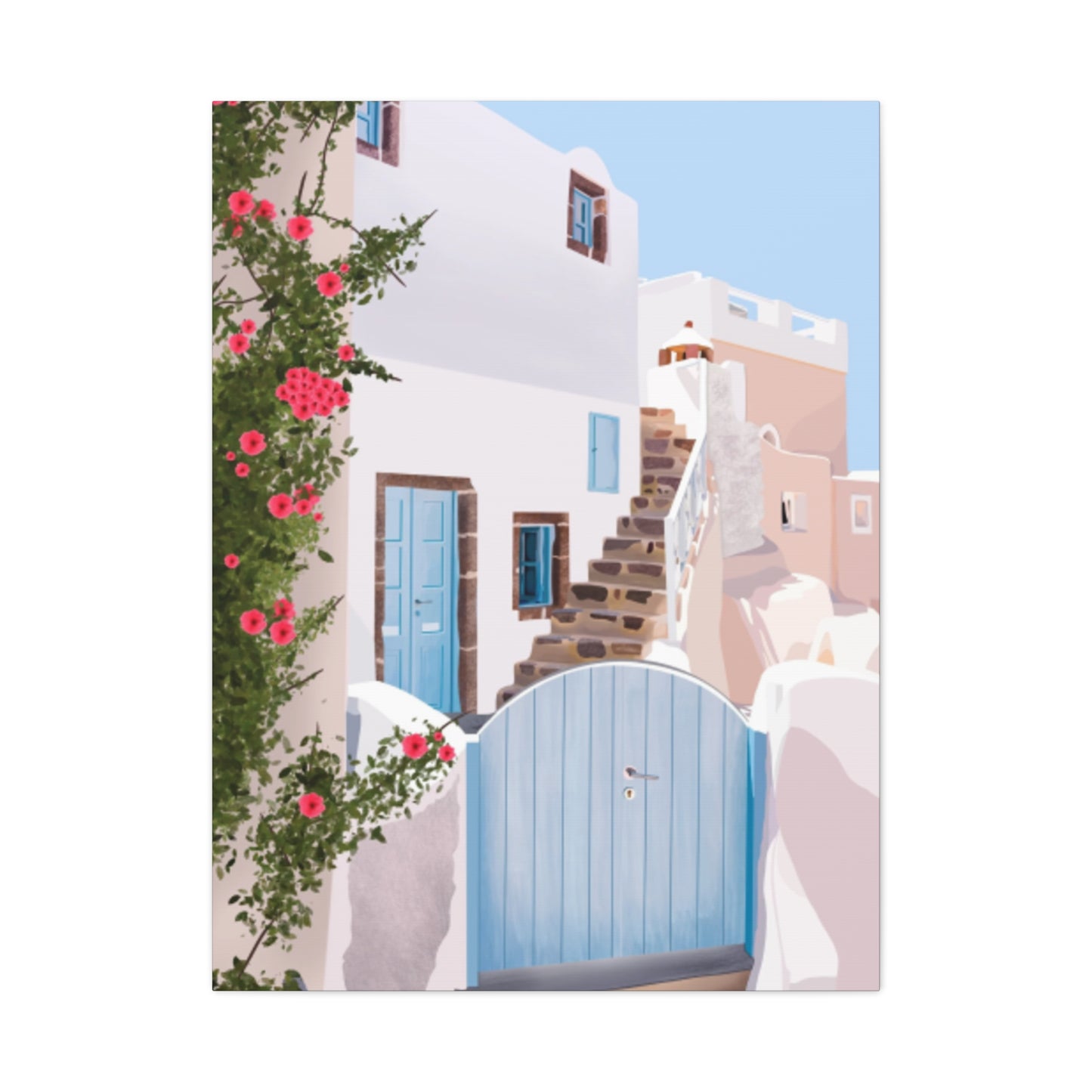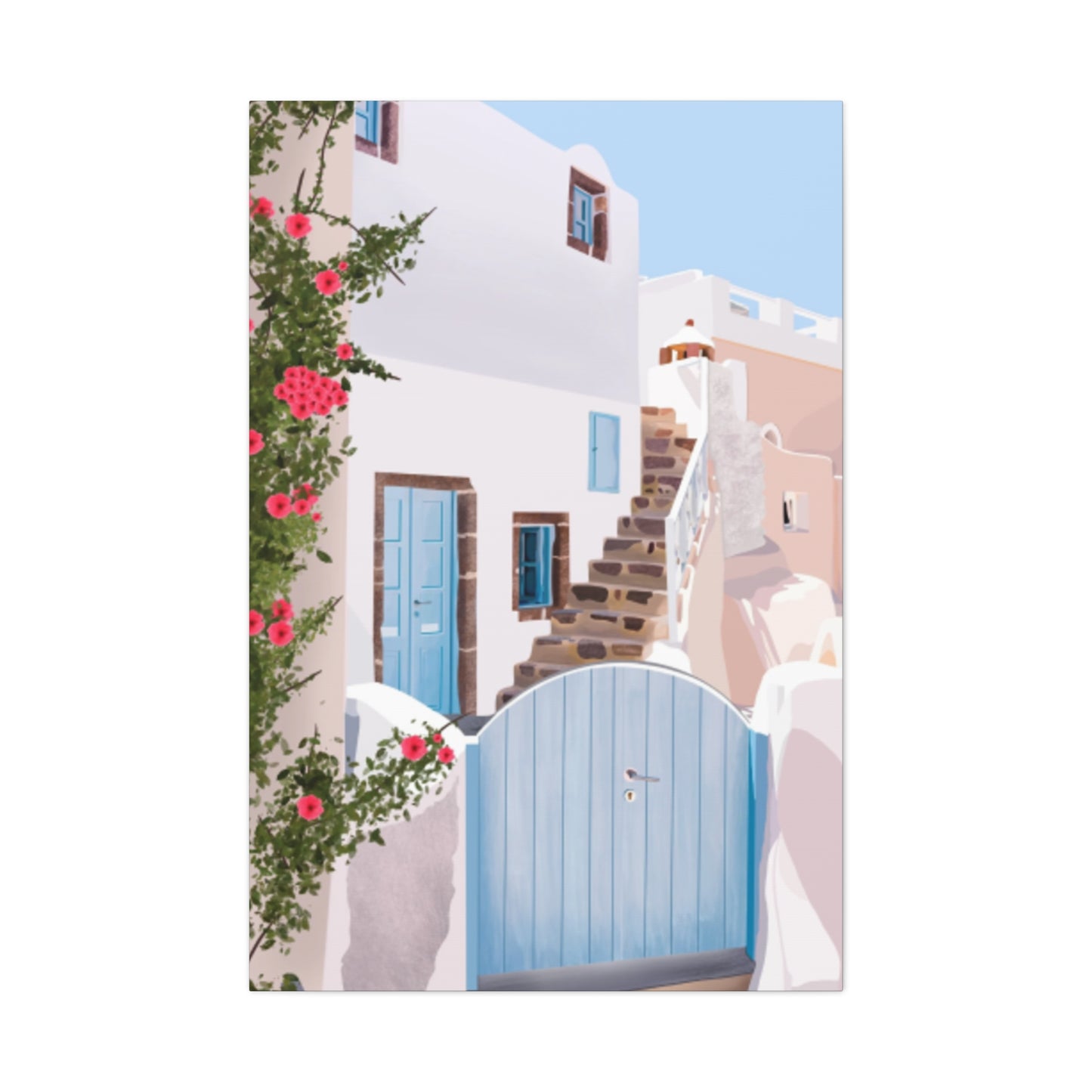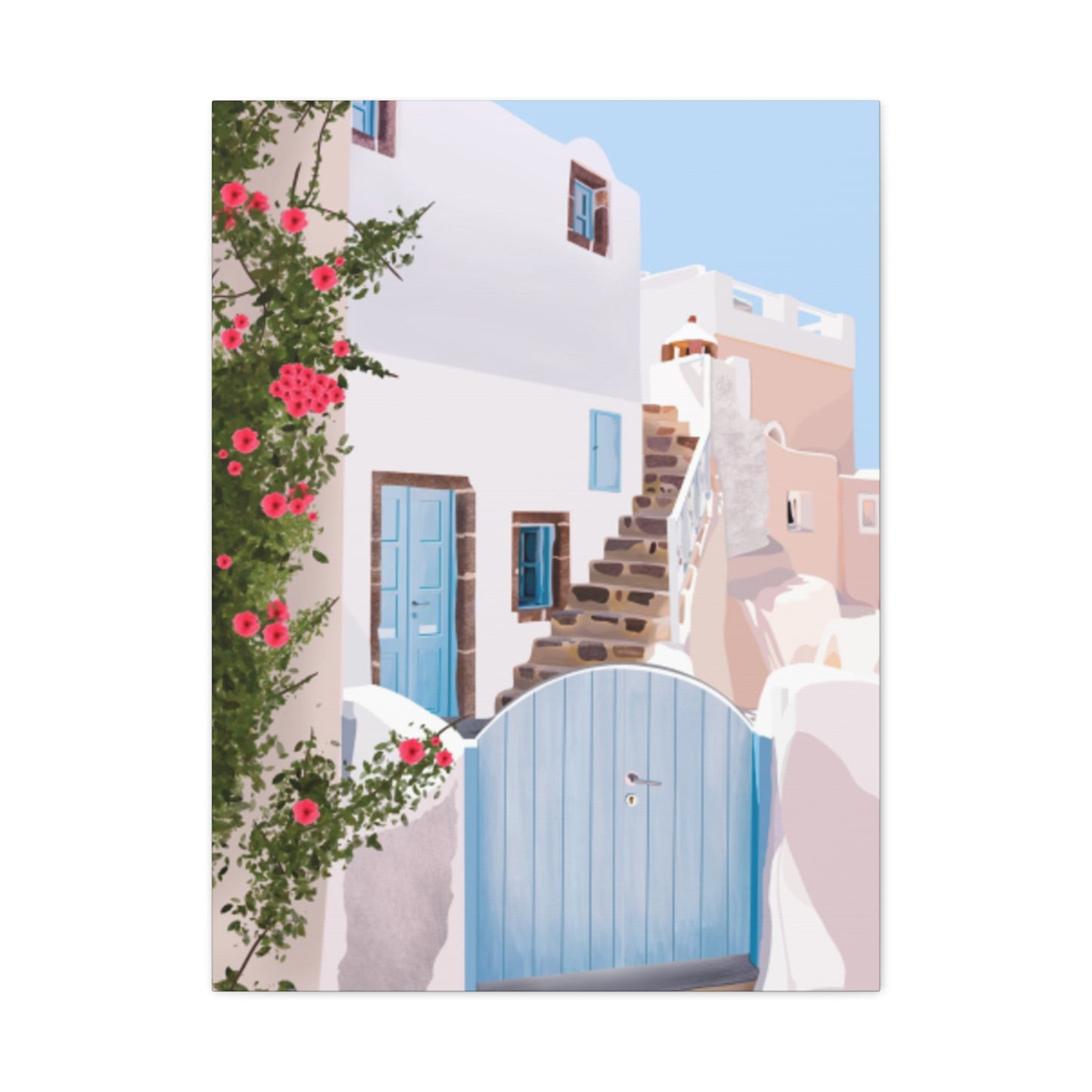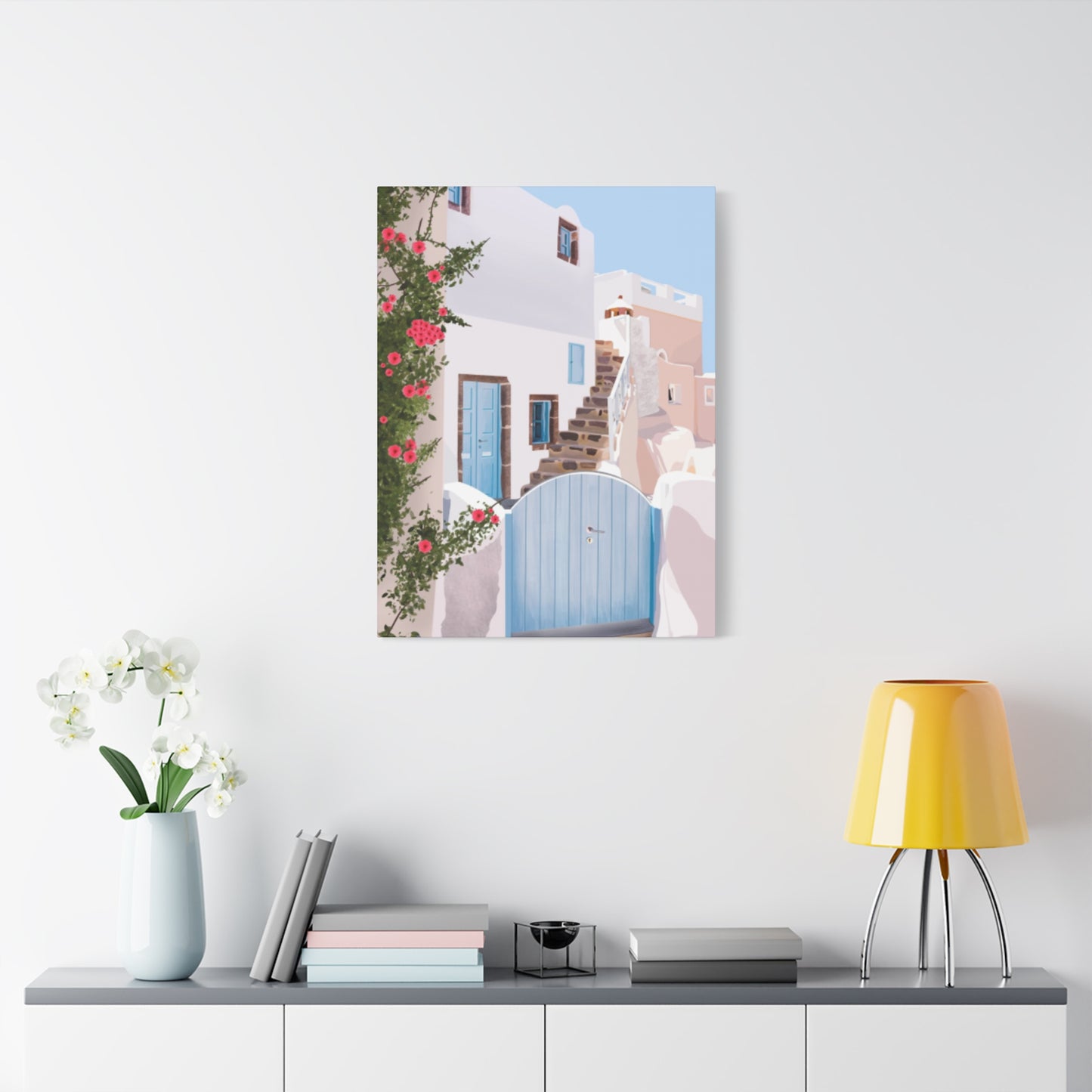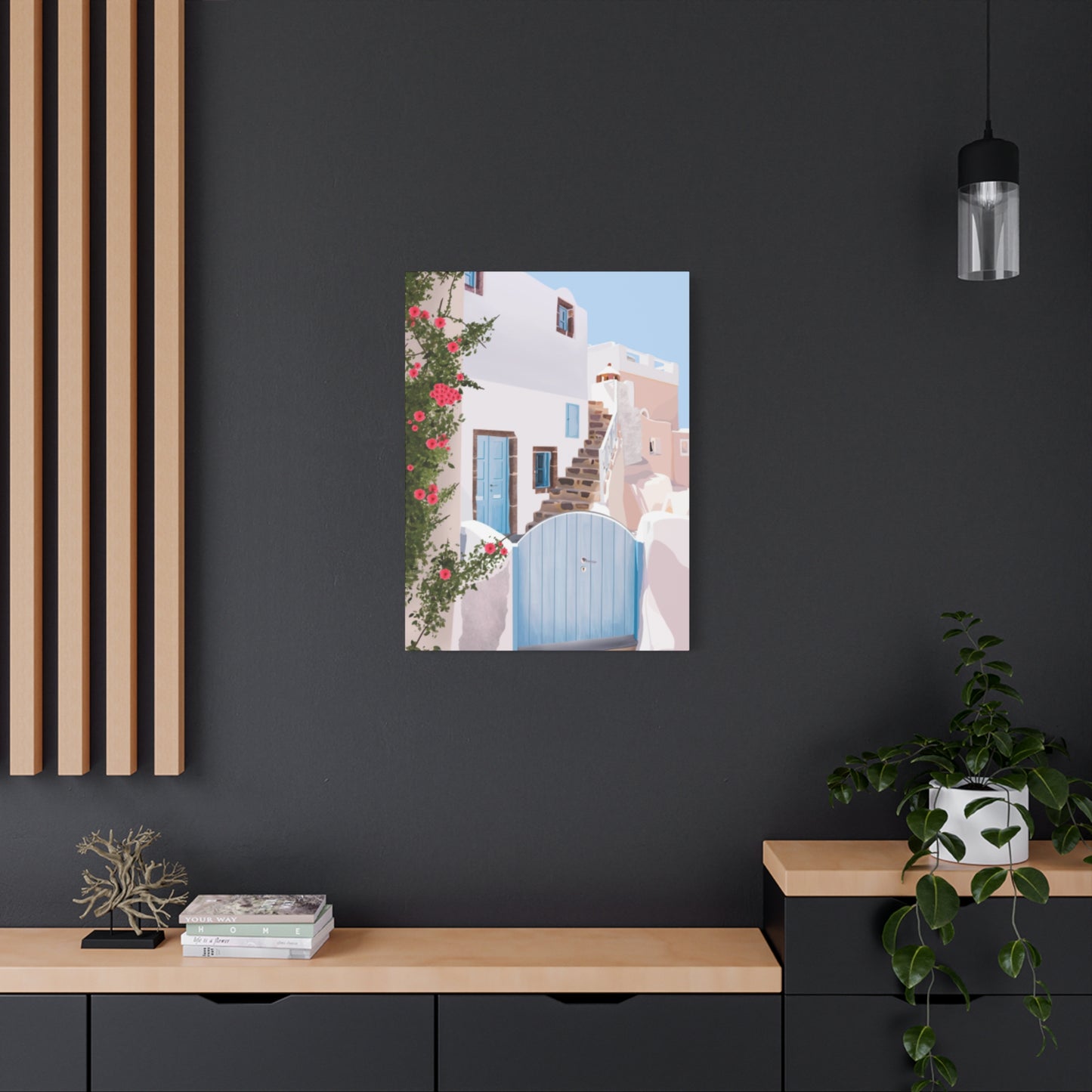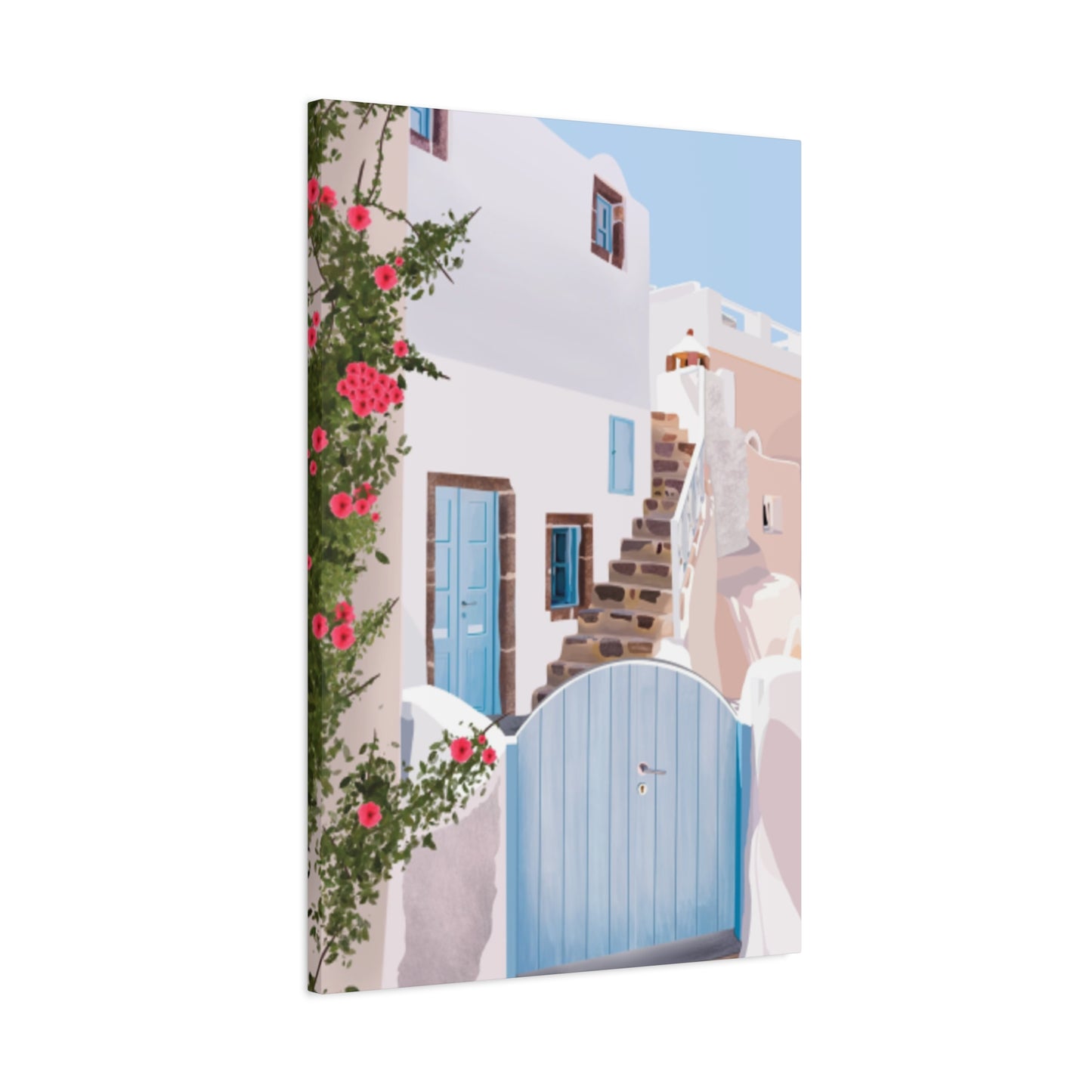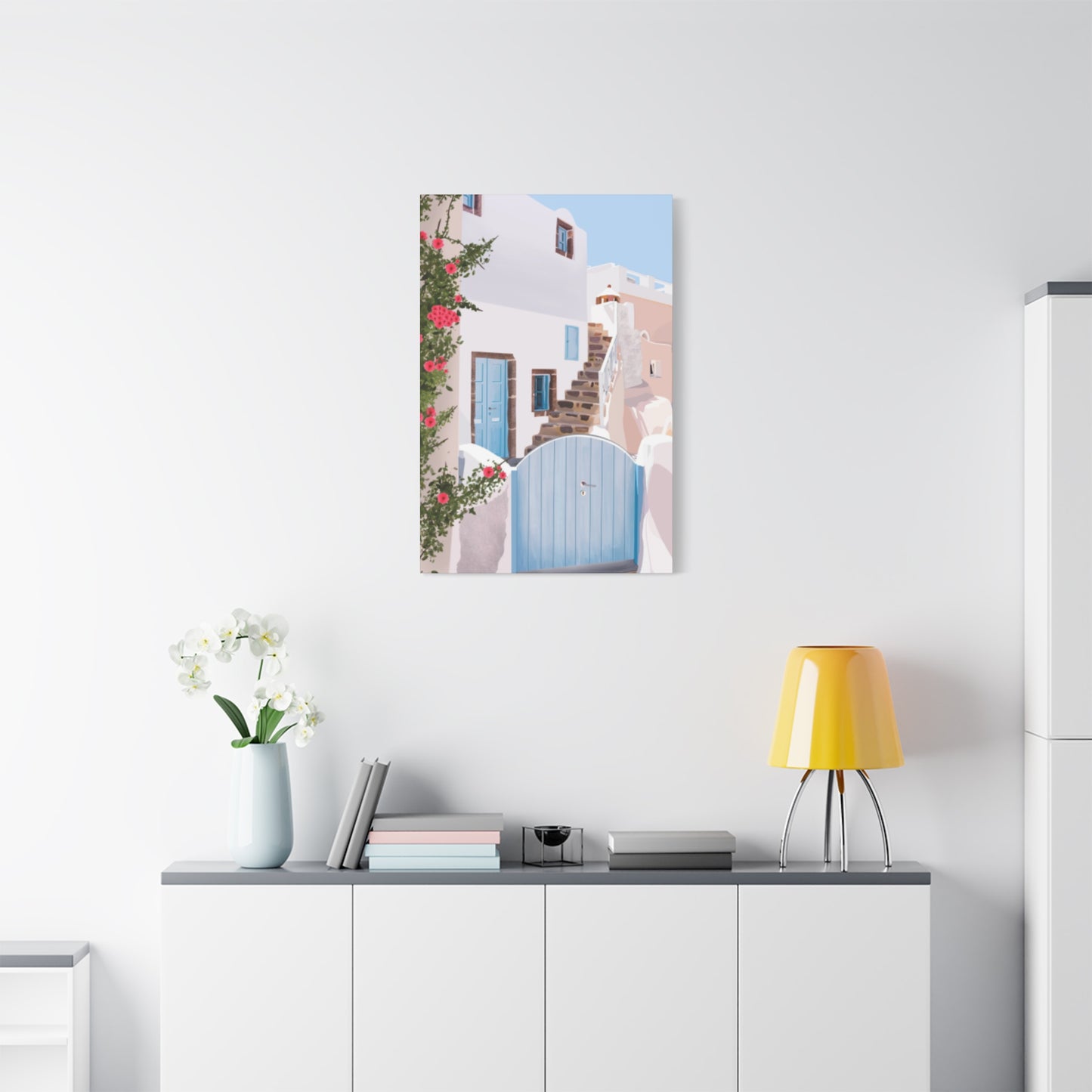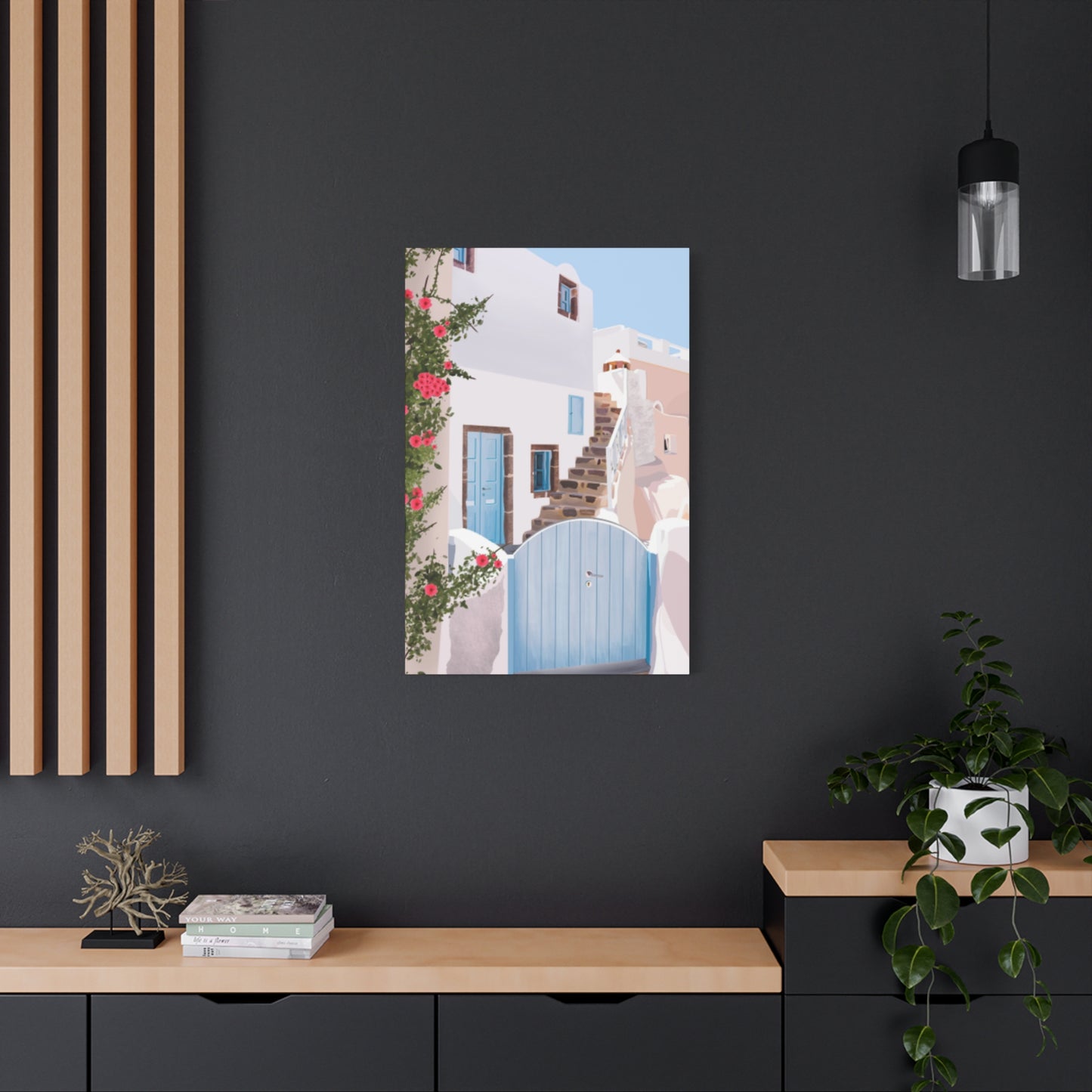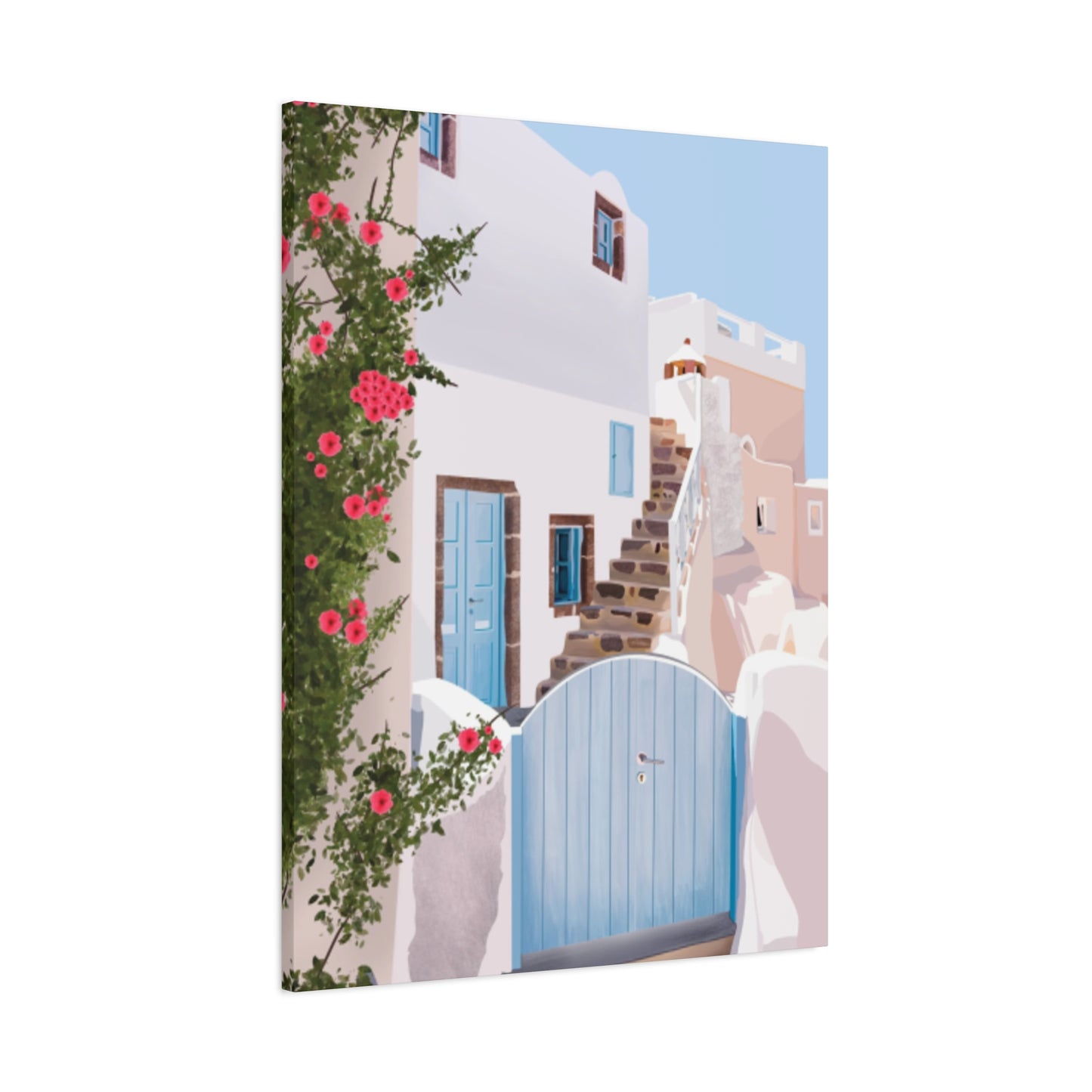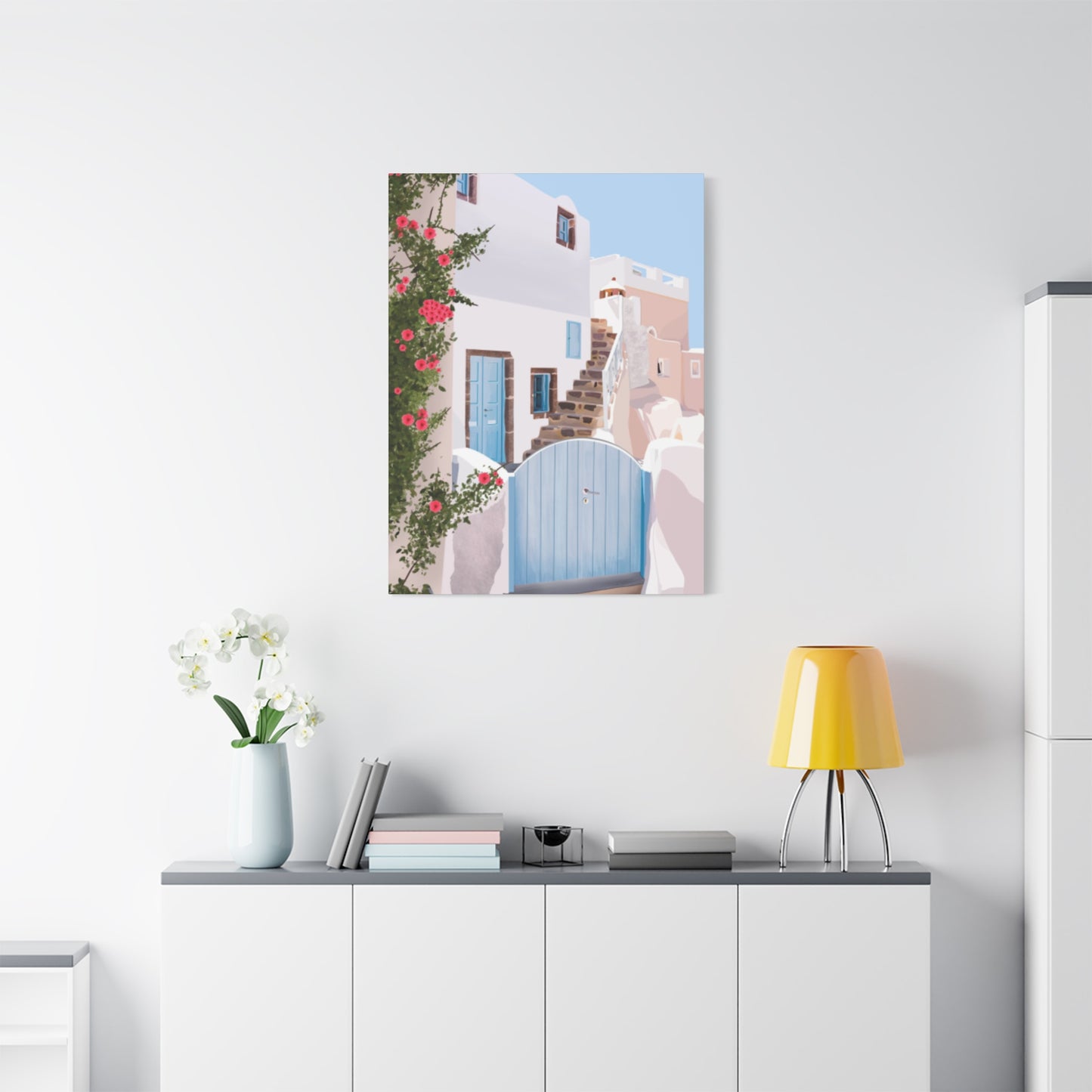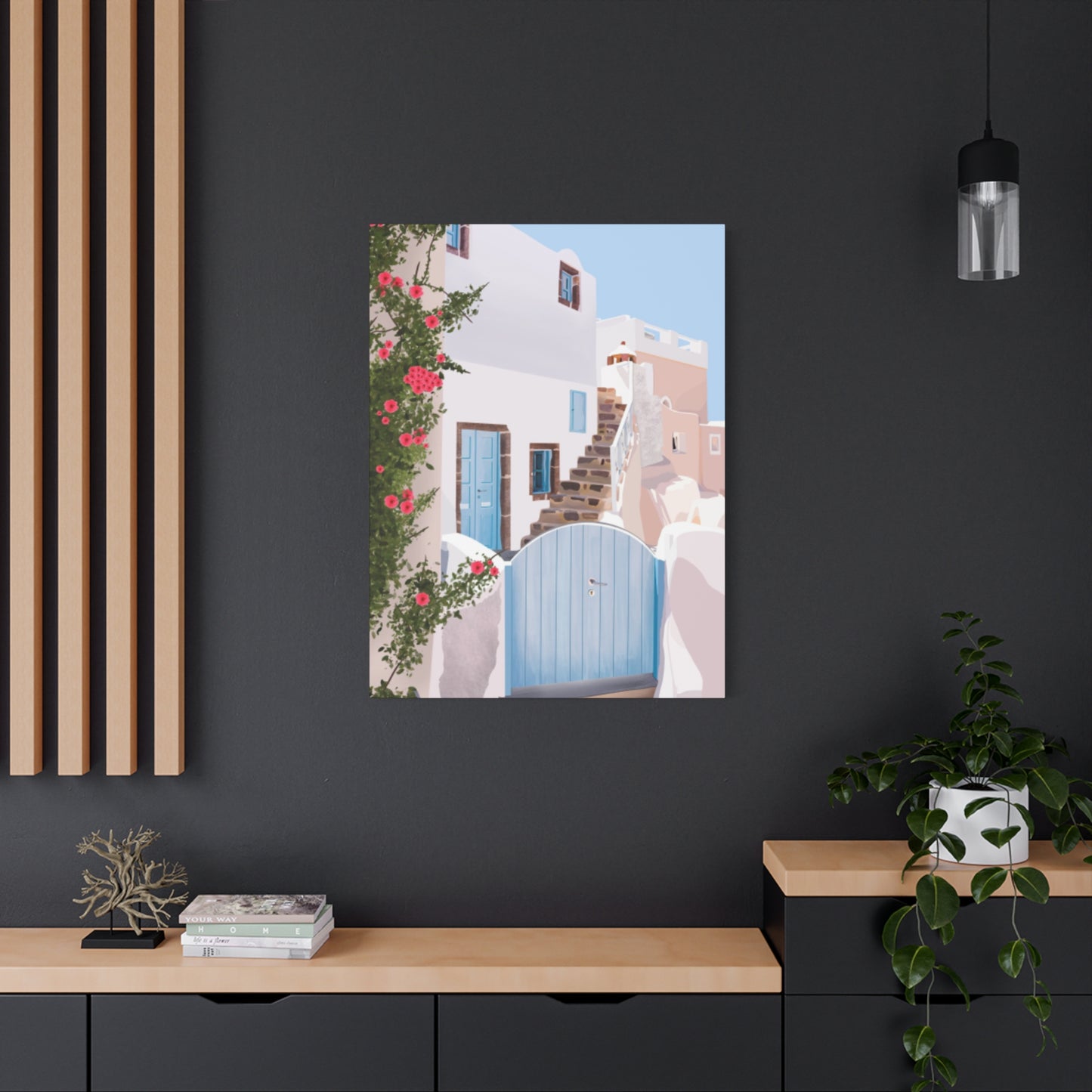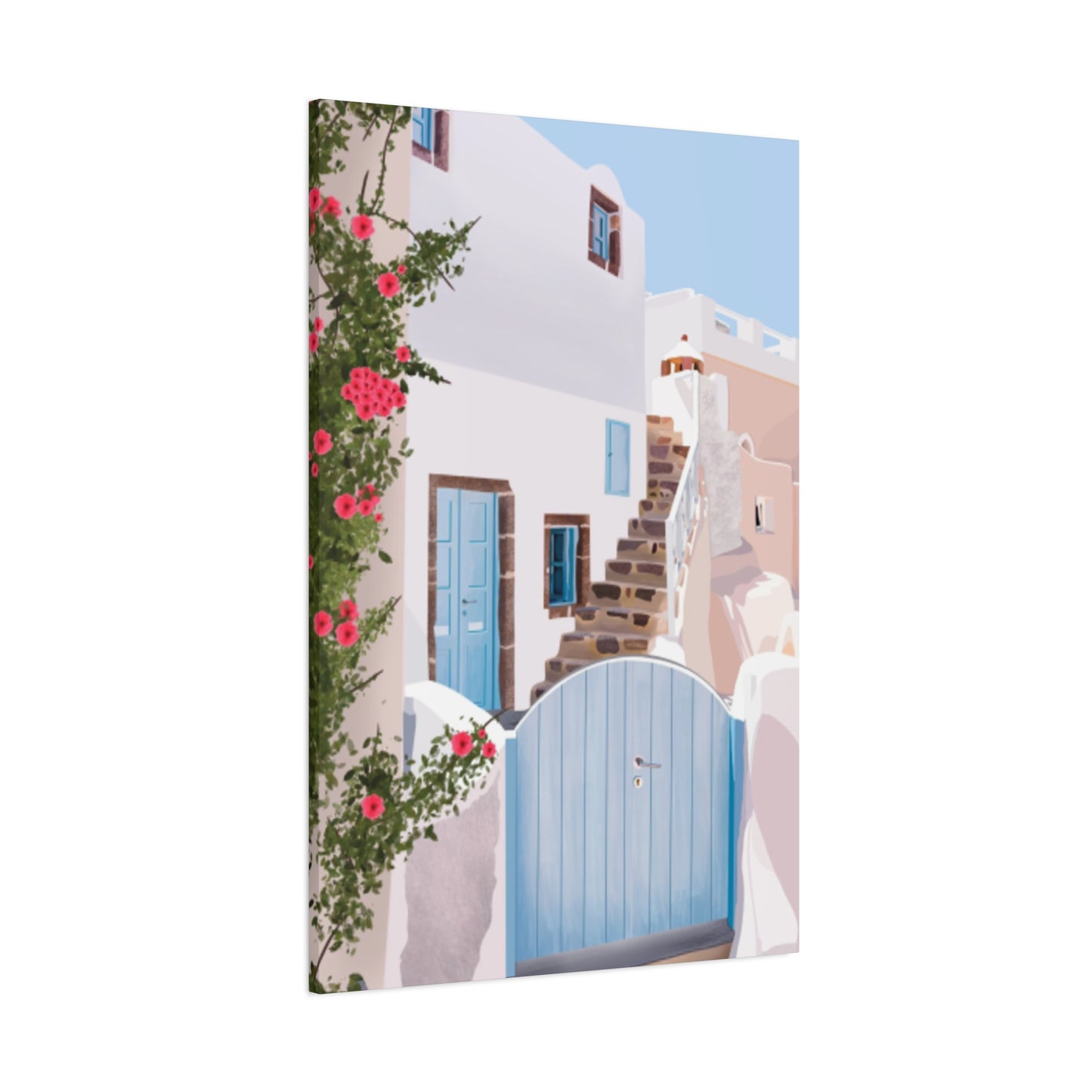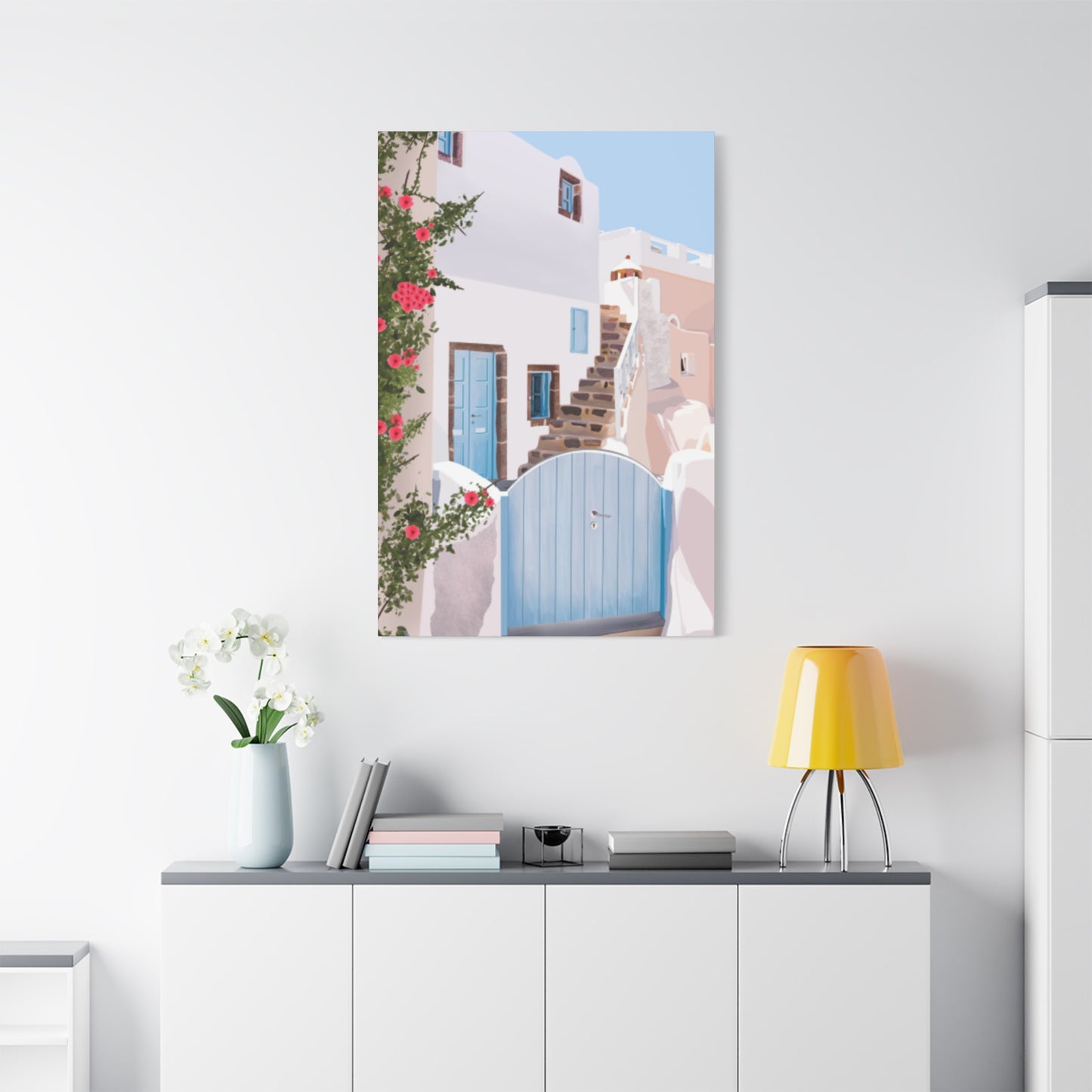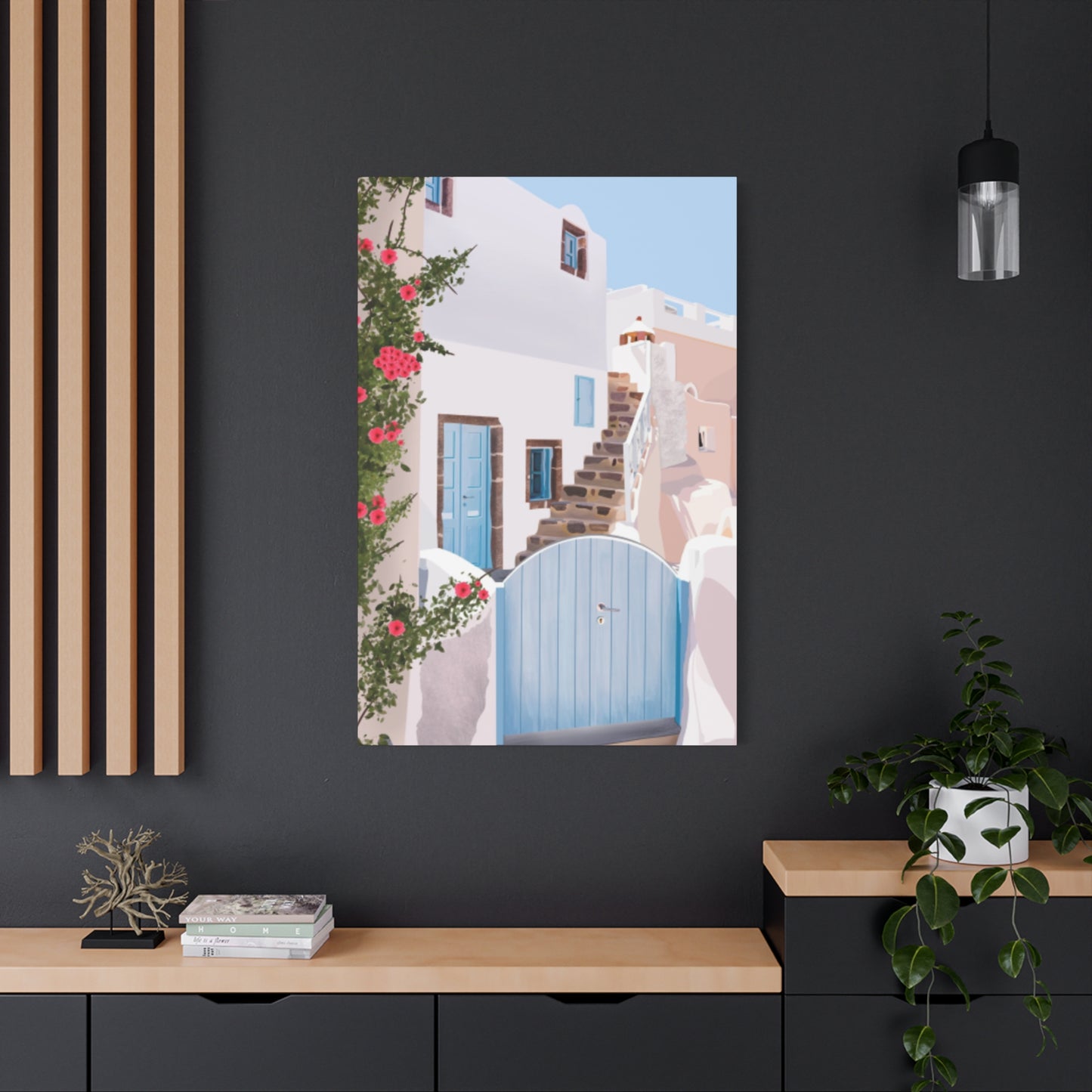Mediterranean Vibes: Greece Homes Wall Art for Timeless Decor
The enchanting allure of Greek architecture has captivated hearts across the globe, offering a timeless blend of simplicity, elegance, and Mediterranean sophistication. Greek homes wall art brings this magical essence directly into your living environments, creating a harmonious balance between modern aesthetics and ancient cultural heritage. These artistic representations serve as windows to a world where azure seas meet pristine white buildings, where every corner tells a story of tradition, history, and natural beauty.
The fascination with Greek architectural elements stems from their ability to evoke feelings of tranquility, vacation memories, and connection to one of the world's most celebrated cultures. When transformed into wall art, these elements become powerful tools for creating atmospheres that transport viewers to sun-soaked islands and picturesque villages. The appeal extends beyond mere decoration, offering homeowners and art enthusiasts opportunities to infuse their environments with the warmth, charm, and timeless beauty that define Greek coastal living.
Contemporary artists and photographers have embraced the challenge of capturing the essence of Greek homes, translating three-dimensional architectural wonders into two-dimensional masterpieces that retain their original impact and emotional resonance. Through various artistic mediums including photography, painting, digital art, and mixed media, these creations preserve the authentic character of Greek villages while adapting to modern decorative preferences and lifestyle requirements.
Whitewashed Greek Homes in Art
The iconic whitewashed facades of Greek homes represent one of the most recognizable and beloved architectural features in Mediterranean culture. These pristine white surfaces, kissed by endless sunshine and contrasted against brilliant blue skies, create a visual symphony that has inspired countless artists and photographers. The tradition of whitewashing emerged from practical necessity, as the white lime coating provided excellent insulation against the intense Mediterranean heat while offering natural antibacterial properties that helped maintain healthy living conditions.
Artists working with whitewashed Greek homes as their subject matter often focus on capturing the interplay between light and shadow, the subtle textures created by layers of whitewash applied over centuries, and the way these surfaces reflect and amplify natural light. The challenge lies in representing the luminous quality of these walls without losing the depth and character that makes them so compelling. Successful artistic interpretations manage to convey both the simplicity and complexity inherent in these architectural elements.
Photographers specializing in Greek architecture frequently visit during golden hour periods when the warm sunlight creates dramatic contrasts between the bright white walls and the deep shadows cast by architectural features such as doorways, window frames, and decorative elements. These moments produce images that seem to glow from within, capturing the ethereal quality that makes whitewashed Greek homes so photogenic and emotionally stirring.
Contemporary artists have developed various techniques for representing whitewashed surfaces in different mediums. Painters might use impasto techniques to create textural surfaces that mimic the tactile quality of lime-washed walls, while digital artists employ sophisticated rendering methods to achieve photorealistic representations that highlight every subtle variation in tone and texture. The goal remains consistent across all mediums: to capture the essence of these architectural gems in ways that preserve their emotional impact and visual appeal.
The cultural significance of whitewashed Greek homes extends beyond their aesthetic appeal, representing centuries of adaptation to environmental conditions and cultural preferences. These buildings embody the Greek philosophy of living in harmony with nature, using available materials and techniques that complement rather than compete with the natural environment. When translated into wall art, these principles continue to influence viewers, promoting appreciation for sustainable building practices and timeless design solutions.
Modern interpretations of whitewashed Greek homes in art often incorporate contemporary elements while maintaining respect for traditional architectural principles. Artists might emphasize certain geometric patterns, play with scale relationships, or introduce subtle color variations that enhance the overall composition without compromising the authentic character of the original structures. These approaches allow for creative expression while honoring the cultural heritage and architectural integrity that make these buildings so captivating.
The market demand for whitewashed Greek homes art reflects a broader cultural appreciation for Mediterranean lifestyle aesthetics, minimalist design principles, and the psychological benefits associated with bright, clean environments. Collectors and homeowners gravitate toward these pieces because they offer visual respite from complex, cluttered modern environments while providing connection to a culture renowned for its emphasis on beauty, simplicity, and harmonious living.
Blue Doors and Windows Greece Wall Prints
The vibrant blue doors and windows that punctuate the whitewashed facades of Greek homes create some of the most striking and memorable visual elements in Mediterranean architecture. These cerulean accents serve both practical and aesthetic purposes, with the blue pigment traditionally believed to repel insects while providing a cooling visual contrast to the intense white surfaces that dominate Greek island architecture. The specific shade of blue used varies from island to island, creating subtle regional variations that add depth and character to the overall architectural landscape.
Artists and photographers who focus on blue doors and windows often emphasize the symbolic significance of these architectural elements. Doors represent transitions, opportunities, and the boundary between public and private life, while windows serve as frames for viewing the world beyond. When rendered in the distinctive Greek blue, these elements become portals that connect viewers to the Mediterranean lifestyle and cultural values that prioritize openness, hospitality, and connection to the natural environment.
The photographic documentation of blue doors and windows requires careful attention to color accuracy and contextual relationships. Professional photographers working in this genre often use polarizing filters to reduce glare from white surfaces while maintaining the saturated intensity of blue pigments. The timing of photography sessions becomes crucial, as different lighting conditions dramatically affect how blue surfaces appear in relation to their white surroundings and the broader environmental context.
Wall prints featuring blue doors and windows have gained popularity among collectors who appreciate the bold graphic impact these images create in contemporary environments. The strong color contrast inherent in these compositions makes them particularly effective as focal points in minimalist or neutral color schemes, where the blue elements can command attention without overwhelming other decorative elements. The geometric simplicity of doors and windows also appeals to modern aesthetic sensibilities that favor clean lines and uncluttered compositions.
Contemporary artists working with blue doors and windows themes often explore the symbolic meanings embedded in these architectural elements. Some focus on the concept of invitation and welcome, highlighting the way traditional Greek doors often stand open or feature welcoming architectural details. Others emphasize the protective qualities of these elements, exploring how they create secure boundaries while maintaining visual connection to the surrounding environment.
Digital artists have embraced the opportunities presented by blue doors and windows imagery, using advanced color manipulation techniques to enhance the intensity and emotional impact of these architectural elements. By adjusting saturation levels, contrast ratios, and surrounding color relationships, digital artists can create prints that capture the essence of the original structures while adapting them to specific decorative requirements or artistic visions.
The psychological impact of blue doors and windows in wall art extends beyond their visual appeal, tapping into color psychology principles that associate blue with feelings of calm, trust, and stability. When combined with the bright, energizing effect of white architectural elements, these images create balanced compositions that promote both relaxation and mental clarity. This makes them particularly suitable for environments where stress reduction and mental well-being are priorities.
Regional variations in blue door and window treatments provide artists with rich source material for exploring cultural diversity within Greek architectural traditions. The deep navy blues of Santorini contrast beautifully with the lighter, more turquoise shades found on other islands, while mainland Greek regions often feature their own distinctive interpretations of the blue and white color scheme. These variations allow collectors to choose pieces that reflect specific regional preferences or create collections that celebrate the diversity of Greek architectural expression.
Coastal Greek Village Homes on Canvas
The dramatic landscapes of Greek coastal villages provide artists with some of the most compelling subject matter in Mediterranean art, combining architectural beauty with spectacular natural settings that seem designed for artistic interpretation. These villages, perched on clifftops or nestled in protected harbors, represent centuries of adaptation to challenging coastal environments while maintaining the aesthetic principles that define Greek architectural heritage. Canvas representations of these communities capture not just individual buildings but entire ecosystems of human settlement harmoniously integrated with dramatic natural landscapes.
Artists working with coastal Greek village subjects face the challenge of representing complex three-dimensional relationships between buildings, topography, and seascape elements within the constraints of two-dimensional canvas surfaces. Successful compositions often employ sophisticated perspective techniques, atmospheric rendering methods, and careful attention to scale relationships to create convincing representations of these dramatic environments. The goal extends beyond mere documentation to capture the emotional and spiritual qualities that make these villages so compelling to visitors and residents alike.
The interplay between architecture and landscape in coastal Greek villages provides endless opportunities for artistic exploration. Buildings seem to grow organically from rocky clifftops, their forms echoing the natural contours of the terrain while creating human-scaled environments that feel both secure and connected to the broader landscape. Canvas artists often emphasize these relationships, using techniques such as color harmony, compositional balance, and atmospheric perspective to demonstrate the seamless integration between built and natural environments.
Contemporary canvas artists working with coastal Greek village themes often incorporate mixed media techniques that allow them to represent the complex textures and surfaces found in these environments. Traditional oil and acrylic painting methods might be combined with collage elements, texture mediums, or digital printing techniques to create rich, layered compositions that capture the tactile qualities of weathered stone, aged plaster, and natural rock formations. These approaches enable artists to create pieces that invite close examination while maintaining visual impact from viewing distances.
The temporal aspect of coastal Greek villages provides artists with opportunities to explore themes related to permanence, change, and cultural continuity. Many of these communities have existed for thousands of years, with buildings continuously modified, rebuilt, and adapted to changing needs while maintaining their essential character and relationship to the surrounding environment. Canvas artists often capture this sense of temporal layering through techniques that suggest age, weathering, and the accumulated effects of countless cycles of maintenance and renewal.
Environmental conditions in coastal Greek villages create unique lighting situations that challenge and inspire artists working in this genre. The combination of reflected light from white buildings, direct sunlight, scattered light from sea surfaces, and atmospheric effects created by salt air produces complex illumination patterns that change throughout the day and across seasons. Canvas artists must develop sophisticated understanding of these lighting conditions to create convincing representations that capture the luminous quality that makes these villages so photogenic.
The cultural significance of coastal Greek villages extends beyond their visual appeal, representing models of sustainable community development that have successfully balanced human needs with environmental constraints for millennia. Canvas artists often attempt to capture these qualities through compositional choices that emphasize harmony, balance, and integration rather than dominance or exploitation. These artistic interpretations can serve as visual reminders of alternative approaches to community planning and environmental stewardship.
Modern collectors increasingly seek canvas representations of coastal Greek villages that combine traditional artistic techniques with contemporary aesthetic sensibilities. This might involve simplified color palettes that emphasize essential forms and relationships, abstract interpretations that capture emotional rather than literal qualities, or hybrid approaches that blend photographic accuracy with painterly expression. The resulting artworks serve as bridges between traditional Mediterranean culture and contemporary lifestyle preferences.
Traditional vs Modern Greek Homes Art
The evolution of Greek residential architecture presents artists with fascinating opportunities to explore themes related to cultural continuity, adaptation, and the tension between preservation and progress. Traditional Greek homes, with their time-tested forms and materials, represent centuries of refinement in response to local climate, available resources, and cultural preferences. Modern Greek homes, while incorporating contemporary materials and technologies, often maintain visual and conceptual connections to their historical predecessors. Artists working with these subjects can create powerful visual dialogues that illuminate both continuity and change in Greek architectural expression.
Traditional Greek home architecture varies significantly across different regions and islands, but certain common elements unite these diverse expressions. Thick stone or adobe walls provide thermal mass for climate control, small windows reduce heat gain while maintaining privacy, and flat or low-pitched roofs accommodate local weather patterns. Courtyards and outdoor living areas reflect cultural preferences for community interaction and connection to natural environments. Artists representing traditional homes often emphasize these functional aspects while celebrating their aesthetic qualities.
Contemporary Greek residential architecture attempts to balance respect for traditional forms with modern lifestyle requirements and building technologies. Large windows maximize views and natural light, open floor plans accommodate contemporary living patterns, and modern materials offer improved performance and reduced maintenance requirements. However, many contemporary Greek architects and builders maintain visual connections to traditional architecture through color schemes, proportional relationships, and integration with landscape elements.
Artists exploring the relationship between traditional and modern Greek homes often employ comparative techniques that highlight both similarities and differences between architectural approaches. Split compositions might show traditional and contemporary structures side by side, allowing viewers to observe how certain design principles persist while others evolve. Alternatively, artists might focus on transitional buildings that combine traditional and modern elements, creating visual narratives about cultural adaptation and architectural evolution.
The materials used in traditional versus modern Greek homes provide rich subject matter for artistic exploration. Traditional buildings often feature locally sourced stone, handmade tiles, and natural plasters that develop beautiful patinas over time. Modern constructions might incorporate concrete, steel, and manufactured materials that offer different textural and visual qualities. Artists can emphasize these material differences to create compositions that explore themes related to craft traditions, industrial production, and the changing relationship between buildings and their local environments.
Color treatment presents another avenue for artistic exploration of traditional versus modern Greek homes. Traditional structures often acquire their colors through natural weathering processes, mineral deposits, and the gradual accumulation of paint layers applied over decades or centuries. Modern buildings typically feature more consistent, controlled color applications that maintain their intended appearance longer but may lack the subtle variations and depth that characterize aged surfaces. Artists can use these color differences to create visual metaphors for cultural change and temporal relationships.
The relationship between buildings and their surrounding environments offers additional opportunities for artistic comparison between traditional and modern Greek homes. Traditional architecture typically demonstrates close integration with topography, orientation to prevailing winds, and adaptation to local microclimates. Modern buildings might prioritize views, privacy, or other considerations that create different relationships with their sites. Artists can emphasize these environmental relationships to explore themes related to sustainability, cultural adaptation, and the changing human relationship with natural systems.
Lifestyle implications of traditional versus modern Greek home design provide artists with conceptual frameworks for creating meaningful artistic interpretations. Traditional homes often embody communal values, extended family structures, and close connections between indoor and outdoor living. Modern homes might prioritize individual privacy, nuclear family units, and controlled environmental conditions. Artists can reference these lifestyle differences through compositional choices, scale relationships, and the inclusion or exclusion of human figures and activity indicators.
Mediterranean Vibes with Greece Homes Art
The concept of Mediterranean vibes encompasses a complex blend of visual, cultural, and lifestyle elements that have become increasingly popular in contemporary decorative arts and environmental design. Greece homes art serves as a particularly effective vehicle for creating these atmospheric qualities, combining architectural beauty with cultural associations that evoke feelings of relaxation, vacation experiences, and connection to a lifestyle that prioritizes leisure, natural beauty, and social connection. The challenge for artists lies in capturing these intangible qualities through visual representations that successfully translate cultural and emotional experiences into decorative objects.
Mediterranean lifestyle aesthetics emphasize outdoor living, natural materials, and harmonious relationships between built and natural environments. Greek homes, with their traditional emphasis on courtyards, terraces, and seamless transitions between indoor and outdoor areas, exemplify these principles in ways that translate effectively to artistic representation. Artists working with Mediterranean themes often focus on these transitional areas, capturing the way Greek architecture creates comfortable outdoor environments that feel both protected and connected to broader landscape contexts.
Color palettes associated with Mediterranean aesthetics draw heavily from the natural environment, incorporating the blues of sea and sky, the whites of limestone and painted surfaces, the earth tones of weathered wood and natural stone, and the green accents of olive trees and other Mediterranean vegetation. Greek homes art that successfully evokes Mediterranean vibes typically employs these color relationships while avoiding the harsh contrasts or artificial saturation that might undermine the relaxed, natural feeling that defines this aesthetic approach.
Lighting quality plays a crucial role in creating authentic Mediterranean atmosphere through artistic representation. The intense, clear light found in Greek coastal environments produces distinctive shadow patterns, color relationships, and atmospheric effects that differ significantly from lighting conditions in other geographic regions. Artists must understand and represent these lighting characteristics to create convincing Mediterranean vibes, whether working from direct observation, photographic references, or imaginative interpretation.
Texture representation becomes particularly important in Mediterranean-themed art because the aesthetic relies heavily on natural materials and weathered surfaces that develop character through exposure to salt air, intense sunlight, and seasonal weather variations. Greek homes typically display rich textural variations created by stone construction, aged plaster surfaces, weathered wood elements, and natural patination processes. Artists working in this genre must develop techniques for representing these tactile qualities in ways that suggest the sensory experiences associated with Mediterranean environments.
Cultural elements embedded in Mediterranean aesthetics extend beyond purely visual considerations to encompass lifestyle values, social practices, and philosophical approaches to daily life that emphasize pleasure, relaxation, and human connection. Greek homes art that successfully captures Mediterranean vibes often includes subtle references to these cultural elements through the inclusion of outdoor dining areas, recreational boat elements, or other indicators of leisure-oriented lifestyle preferences.
Seasonal considerations add another layer of complexity to creating authentic Mediterranean vibes through Greek homes art. While many artistic interpretations focus on summer conditions with their intense light and vibrant colors, the Mediterranean climate includes subtle seasonal variations that affect both the appearance and mood of architectural subjects. Artists might explore these seasonal qualities to create collections that reflect the full range of Mediterranean atmospheric conditions throughout the year.
Contemporary applications of Mediterranean aesthetics in residential and commercial environments have created strong demand for Greek homes art that can effectively transport viewers to Mediterranean settings without requiring actual travel. This has led artists to develop techniques for creating immersive visual experiences that capture not just the appearance but the feeling of being in Mediterranean environments. The most successful pieces seem to radiate warmth, relaxation, and the promise of escape from stressful modern living conditions.
Greek Island Homes for Wall Decor
The distinctive architectural characteristics of Greek island homes have evolved through centuries of adaptation to unique environmental conditions, creating building forms and decorative treatments that serve both practical and aesthetic functions. These homes, scattered across dozens of inhabited islands throughout the Aegean and Ionian seas, represent one of the most cohesive yet varied architectural traditions in the Mediterranean region. When translated into wall decor, these structures offer viewers opportunities to experience the beauty and cultural richness of Greek island life while adding sophisticated Mediterranean character to contemporary living environments.
Cycladic architecture, perhaps the most internationally recognized Greek island building tradition, emphasizes geometric simplicity, brilliant white surfaces, and bold blue accents that create striking visual contrasts against the dramatic landscape and seascape backgrounds typical of these locations. Wall decor featuring Cycladic homes often captures the sculptural qualities of these buildings, emphasizing their role as three-dimensional art objects that enhance rather than compete with their natural surroundings. The resulting images serve as powerful focal points that can transform ordinary rooms into spaces that evoke the clarity and beauty of Greek island environments.
Ionian island architecture differs significantly from Cycladic traditions, reflecting different historical influences, climate conditions, and available building materials. These homes often feature more elaborate decorative elements, varied color palettes, and architectural details that reflect Venetian, French, and British influences accumulated during centuries of changing political control. Wall decor representing Ionian island homes offers opportunities to explore themes related to cultural fusion, historical continuity, and the way architectural forms adapt to reflect changing cultural and political circumstances.
Dodecanese island homes combine elements from various Mediterranean traditions, creating unique architectural expressions that reflect the strategic geographic position of these islands at the crossroads of European, Asian, and African cultures. Artists working with Dodecanese subjects often emphasize the eclectic character of these buildings, celebrating the way different cultural influences have been synthesized into distinctive local architectural traditions. Wall decor featuring these homes can serve as visual reminders of Greece's role as a cultural bridge between different civilizations.
The relationship between Greek island homes and their surrounding landscapes provides artists with rich opportunities for creating compelling wall decor compositions. Unlike mainland architecture, which might be surrounded by gardens or other human-modified landscapes, island homes often emerge directly from rocky terrain or perch dramatically on clifftops with spectacular sea views. This creates opportunities for bold, dramatic compositions that capture the heroic scale of these architectural achievements while celebrating the beauty of the natural settings they inhabit.
Material considerations unique to island construction create distinctive visual and textural qualities that translate effectively to wall decor applications. The combination of local stone, imported materials, and creative use of found objects creates surfaces and details that display rich character and visual interest. Artists working with island home subjects often emphasize these material qualities, using techniques that capture the tactile richness and authentic character that make these buildings so compelling to experience in person.
Climate adaptation strategies employed in Greek island home construction create architectural elements that serve as excellent subjects for wall decor. Features such as windbreaks, sun shades, cooling courtyards, and strategic window placement not only serve practical functions but create distinctive visual patterns and spatial relationships that add compositional interest to artistic representations. These functional elements also provide opportunities for artists to explore themes related to sustainability, environmental adaptation, and traditional ecological knowledge.
The scale relationships between individual homes and island communities create opportunities for wall decor that captures both intimate domestic scenes and broader village panoramas. Single-home compositions might emphasize architectural details, material textures, and the relationship between built and natural elements. Community-scale compositions can capture the organic growth patterns of island settlements, the way individual buildings contribute to larger urban compositions, and the relationship between human settlements and dramatic island topography.
Framing Greece Homes Wall Art
The presentation of Greece homes wall art through appropriate framing techniques can significantly enhance the visual impact and longevity of these decorative pieces while ensuring they integrate successfully with broader environmental design schemes. Professional framing considerations for Mediterranean-themed artwork require understanding of both technical preservation requirements and aesthetic principles that complement the cultural and visual characteristics inherent in Greek architectural subjects. The goal extends beyond simple protection to create presentation formats that enhance and amplify the emotional and aesthetic qualities that make these artworks compelling.
Material selection for framing Greece homes wall art should reflect and complement the natural materials and color relationships characteristic of Greek architecture. Wood frames crafted from weathered or distressed finishes can echo the aged textures found in traditional Greek buildings, while maintaining neutral colors that don't compete with the artwork itself. Metal frames in bronze, copper, or aged steel finishes can reference the hardware and functional elements found in Greek architecture without overwhelming the visual impact of the artwork.
Color coordination between frames and Greece homes artwork requires careful consideration of the dominant color relationships within the pieces themselves. The classic blue and white palette characteristic of many Greek architectural subjects suggests frame colors that either harmonize with these tones or provide neutral backgrounds that allow the artwork colors to appear more vibrant by contrast. Warm white, cream, or natural wood tones often work effectively, while avoiding colors that might clash with or diminish the Mediterranean color relationships within the artwork.
Matting considerations for Greece homes wall art can significantly impact both the visual presentation and preservation qualities of framed pieces. Museum-quality matting materials prevent chemical damage to artwork while providing visual breathing room that prevents compositions from feeling cramped or visually compressed. Mat colors should complement rather than compete with artwork colors, with warm whites, creams, or subtle earth tones often providing effective backgrounds for Mediterranean-themed pieces.
Scale relationships between artwork, matting, and frame dimensions require careful consideration to ensure appropriate visual balance and impact within intended display environments. Larger Greece homes artworks might benefit from proportionally wider frames and mats that create substantial presence and visual weight appropriate for significant wall areas. Smaller pieces might require more delicate framing treatments that maintain intimacy and detailed viewing characteristics without appearing insignificant within their display contexts.
Glazing options for framed Greece homes wall art should balance protection requirements with visual clarity and reflection control. Museum-quality glass or acrylic options provide UV protection while maintaining color accuracy and visual clarity. Anti-reflective coatings can be particularly beneficial for artwork displayed in areas with significant natural light, allowing viewers to appreciate details and color relationships without interference from reflected glare or environmental lighting conditions.
Conservation framing techniques become particularly important for valuable or irreplaceable Greece homes artwork, ensuring long-term preservation while maintaining aesthetic qualities. Acid-free materials, proper spacing between artwork and glazing, and climate-controlled mounting techniques prevent deterioration while allowing pieces to be enjoyed for decades or centuries. These considerations are especially important for original artwork, limited edition prints, or pieces with particular sentimental or monetary value.
Custom framing solutions for Greece homes wall art collections allow for coordinated presentation approaches that create visual unity while respecting the individual characteristics of different pieces. Consistent frame styles, mat treatments, and spacing relationships can transform individual artworks into cohesive collections that enhance the overall decorative impact while maintaining the distinctiveness of each piece. This approach works particularly well for series or collections that explore different aspects of Greek architectural subjects.
Display lighting considerations for framed Greece homes wall art can significantly enhance visual impact while protecting artwork from damage caused by excessive light exposure. Picture lighting systems, track lighting, or strategically positioned natural lighting can highlight textures, colors, and compositional elements while avoiding hot spots or uneven illumination that might detract from viewing experiences. Proper lighting design considers both aesthetic enhancement and conservation requirements.
Abstract Greek Homes in Canvas Prints
Contemporary artistic interpretations of Greek architectural subjects have increasingly embraced abstract approaches that capture essential qualities, emotional resonances, and cultural associations while departing from literal representational techniques. Abstract Greek homes canvas prints offer viewers opportunities to experience the spiritual and aesthetic essence of Mediterranean architecture without being constrained by photographic accuracy or traditional artistic conventions. These pieces can serve as sophisticated decorative elements that reference Greek cultural heritage while integrating successfully with contemporary aesthetic preferences and minimalist environmental design approaches.
Color abstraction in Greek homes canvas prints often focuses on the essential color relationships that define Mediterranean aesthetics while eliminating distracting details or complex compositional elements that might compete with these fundamental color harmonies. Artists working in this mode might reduce entire architectural compositions to simple geometric forms rendered in the classic blue and white palette, creating pieces that evoke the emotional and cultural associations of Greek architecture while functioning as pure color studies that enhance contemporary environmental design schemes.
Geometric abstraction approaches to Greek homes subjects emphasize the essential structural and proportional relationships that underlie traditional Mediterranean architecture. These compositions might distill complex building forms into simple rectangles, circles, and triangular shapes that capture the mathematical harmonies inherent in Greek architectural traditions while creating visually striking patterns suitable for modern decorative applications. The resulting canvas prints function simultaneously as references to cultural heritage and as pure geometric compositions that complement contemporary aesthetic sensibilities.
Textural abstraction techniques allow artists to capture the tactile qualities of weathered plaster, aged stone, and other materials characteristic of Greek architecture without representing these elements in literal detail. Through various painting techniques, mixed media applications, or digital manipulation methods, artists can create surfaces that suggest the sensory experiences of touching Mediterranean building materials while creating visual compositions that work effectively as pure abstract art. These approaches often prove particularly successful in creating artwork that adds tactile interest to minimalist environmental designs.
Atmospheric abstraction focuses on capturing the distinctive lighting conditions, air quality, and environmental atmosphere characteristic of Greek coastal and island locations. Rather than representing specific buildings or architectural details, these abstract interpretations might focus entirely on color relationships, luminosity effects, and atmospheric qualities that evoke the sensory experience of being in Greek architectural environments. The resulting canvas prints can create immersive environmental effects that transport viewers without relying on representational imagery.
Emotional abstraction approaches attempt to capture and convey the feelings, memories, and psychological associations that viewers experience when encountering Greek architecture. These pieces might emphasize warmth, relaxation, nostalgia, or other emotional qualities through color choices, compositional arrangements, and surface treatments that bypass literal representation to connect directly with viewer emotions and subconscious associations. Such artwork often proves particularly effective in therapeutic or hospitality environments where emotional comfort and stress reduction are priorities.
Mixed media abstraction combines traditional canvas painting techniques with collage elements, texture materials, or digital printing methods to create complex surfaces that reference the layered, accumulated character of authentic Greek architectural environments. These pieces might incorporate actual materials such as sand, plaster, or fabric elements that suggest the tactile qualities of Mediterranean buildings while creating unique artistic objects that cannot be replicated through purely digital or photographic methods.
Scale considerations in abstract Greek homes canvas prints allow artists to create pieces that function effectively at various viewing distances and within different environmental contexts. Large-scale abstract pieces can serve as dramatic focal points that dominate entire wall areas, while smaller works might function as intimate studies that reward close examination. The abstract nature of these pieces often allows them to maintain visual interest and impact across a broader range of scales than more detailed representational works.
Contemporary market demand for abstract Greek homes canvas prints reflects growing appreciation for artwork that combines cultural references with modern aesthetic sensibilities. These pieces appeal to collectors and decorators who want to reference Mediterranean heritage while maintaining contemporary visual approaches that integrate successfully with modern architectural and environmental design schemes. The abstraction allows for more flexible interpretation and application than literal representational artwork might permit.
Brightening Rooms with Greece Homes Art
The luminous qualities inherent in Greek architectural subjects make them particularly effective tools for enhancing natural and artificial lighting conditions within residential and commercial environments. The traditional white-washed surfaces, brilliant blue accents, and dramatic light-shadow relationships characteristic of Greek homes create artwork that seems to generate its own illumination while amplifying existing light sources within display environments. Strategic placement and selection of Greece homes art can transform dim or poorly lit areas into bright, welcoming environments that evoke the luminous atmosphere of Mediterranean coastal regions.
Color psychology principles explain why Greece homes art proves so effective at brightening environments both literally and psychologically. White surfaces reflect maximum amounts of available light while creating feelings of cleanliness, spaciousness, and mental clarity. Blue accents provide calming influences while maintaining visual interest and preventing white-dominated compositions from appearing sterile or cold. These color relationships work synergistically to create artwork that enhances both the physical illumination and emotional atmosphere of display environments.
Placement strategies for maximizing the brightening effects of Greece homes art require consideration of natural lighting patterns, artificial lighting sources, and the reflective properties of surrounding surfaces and furnishings. Positioning artwork opposite windows or other natural light sources allows pieces to capture and reflect available daylight throughout daily cycles. Strategic placement near artificial lighting sources can create dramatic evening effects while ensuring artwork remains visible and impactful during periods of reduced natural illumination.
Seasonal lighting variations in many geographic regions create opportunities for Greece homes art to provide consistent brightening effects that counteract the psychological impacts of reduced daylight during winter months. The inherently sunny, optimistic character of Mediterranean architectural subjects can provide emotional and visual compensation for seasonal lighting deficiencies while maintaining year-round decorative appeal. This makes Greece homes art particularly valuable in northern climates where seasonal affective issues related to reduced daylight exposure are common concerns.
Size and scale considerations affect the brightening potential of Greece homes artwork, with larger pieces generally providing more significant environmental impact through their ability to reflect light and dominate visual attention within their display environments. However, strategic groupings of smaller pieces can create cumulative brightening effects while offering more flexibility in terms of placement options and budget considerations. The key lies in ensuring sufficient visual mass to create meaningful impact within the intended environment.
Surface finish options for Greece homes prints and paintings can significantly impact their light-reflecting properties and overall brightening effectiveness. Glossy or semi-gloss finishes maximize light reflection but may create glare problems in certain lighting conditions. Matte finishes reduce glare while maintaining color accuracy and visual appeal. Canvas textures can add visual interest while providing moderate light-scattering effects that create subtle illumination enhancement without harsh reflective effects.
Complementary environmental modifications can amplify the brightening effects of Greece homes art through strategic coordination with paint colors, furnishing choices, and lighting design decisions. Light-colored wall paint, reflective furniture surfaces, and strategic mirror placement can work synergistically with artwork to create environments that maximize available light while maintaining visual interest and aesthetic appeal. The goal involves creating cohesive environmental design schemes that enhance rather than compete with artwork effects.
Artificial lighting design specifically coordinated with Greece homes art can create dramatic evening effects that maintain the brightening impact throughout daily cycles. Picture lighting, accent lighting, or general ambient lighting systems can be positioned to highlight artwork while providing general environmental illumination. LED lighting technology offers energy-efficient options for maintaining consistent lighting effects while minimizing heat generation that might damage artwork over time.
Psychological brightening effects of Greece homes art extend beyond purely physical illumination considerations to encompass emotional and mental impacts that contribute to overall environmental quality. The association between Greek architecture and vacation experiences, relaxation, and positive life experiences can create psychological brightening effects that improve mood and reduce stress even in physically dim environments. These emotional benefits often prove as important as literal illumination improvements in creating successful environmental enhancements.
Greek Homes and Nature Combined
The seamless integration between Greek residential architecture and Mediterranean natural environments provides artists with compelling opportunities to explore themes related to sustainable design, environmental harmony, and the relationship between human habitation and natural systems. Traditional Greek building practices evolved over millennia to work with rather than against natural forces, creating architectural solutions that enhance rather than degrade their environmental contexts. Contemporary artistic representations of these relationships can serve as both aesthetic objects and educational tools that demonstrate alternative approaches to environmental design and sustainable living practices.
Topographical integration in Greek home design creates dramatic visual relationships that translate effectively to artistic representation. Buildings perched on clifftops, nestled into natural rock formations, or following the contours of hillside terrain demonstrate sophisticated understanding of site-specific design principles that minimize environmental impact while maximizing aesthetic and functional benefits. Artists working with these subjects often emphasize the organic quality of these relationships, showing how human construction can complement rather than compete with natural landscape features.
Vegetation relationships in Greek home environments reflect centuries of horticultural experimentation that identified plant species capable of thriving in Mediterranean climate conditions while providing practical and aesthetic benefits to human inhabitants. Olive trees, grape vines, citrus plants, and various aromatic herbs create natural gardens that require minimal irrigation while providing food, shade, and sensory pleasure. Artistic representations of these plant-architecture relationships can inspire contemporary environmental design while creating visually compelling compositions that celebrate biodiversity and sustainable landscaping practices.
Water management strategies employed in traditional Greek home design create architectural elements that serve both practical and aesthetic functions while demonstrating sophisticated understanding of hydrological principles. Roof drainage systems, cistern construction, and courtyard design all reflect techniques for capturing, storing, and utilizing scarce water resources in ways that enhance rather than detract from architectural beauty. Artists can emphasize these water-related elements to create compositions that explore themes related to resource conservation and adaptive design strategies.
Climate adaptation features built into Greek home design create distinctive architectural elements that provide rich subject matter for artistic exploration. Thick walls for thermal mass, strategic window placement for cross-ventilation, and covered outdoor areas for shade all represent design solutions that work with natural climate patterns rather than requiring energy-intensive mechanical systems. Artistic representations of these adaptive features can serve as visual arguments for sustainable design approaches while creating compelling aesthetic compositions.
Seasonal relationships between Greek homes and their natural environments provide opportunities for artists to explore temporal themes related to natural cycles, agricultural patterns, and the changing relationship between human habitation and environmental conditions throughout annual cycles. Spring wildflower displays, summer drought adaptations, autumn harvest activities, and winter storm protection all create different visual and cultural contexts that can inform artistic interpretation and provide rich material for seasonal artwork collections.
Wildlife integration in Greek home environments reflects traditional practices that accommodate rather than exclude natural animal populations, creating architectural solutions that recognize the interconnectedness of human and natural systems. Nesting sites for birds, access routes for small mammals, and gardens that support pollinating insects all demonstrate design approaches that enhance rather than diminish local biodiversity. Artists can reference these relationships to create compositions that celebrate ecological integration and environmental stewardship.
Contemporary environmental challenges facing Greek home design provide opportunities for artists to explore themes related to climate change adaptation, resource scarcity, and the need for more sustainable approaches to residential design. Rising sea levels, increased storm intensity, and changing precipitation patterns all require adaptive responses that maintain cultural character while addressing new environmental realities. Artistic interpretations can help visualize potential solutions while maintaining respect for traditional design principles and cultural values.
Material sourcing practices for traditional Greek home construction demonstrate sophisticated understanding of local resource availability and environmental impact considerations. The use of locally quarried stone, locally produced lime plasters, and regionally available timber creates buildings that harmonize with their environments while minimizing transportation-related environmental impacts. Artists can emphasize these material relationships to create compositions that celebrate local resource utilization and environmental responsibility.
Seasonal Scenes of Greece Homes
The Mediterranean climate creates distinctive seasonal variations that dramatically affect the appearance and atmosphere of Greek homes throughout annual cycles, providing artists with rich opportunities to explore temporal themes while documenting the changing relationships between architecture and environmental conditions. Unlike regions with extreme seasonal contrasts, Greece experiences subtle but significant changes that affect lighting quality, vegetation patterns, and human activity levels in ways that create compelling artistic subjects while maintaining the essential character that makes Greek architecture so appealing across all seasons.
Spring transformations in Greek home environments create some of the most dramatically beautiful scenes available to artists working with Mediterranean subjects. Winter rains awaken dormant vegetation, covering terraces and courtyards with vibrant wildflower displays that contrast beautifully with pristine white architecture. The quality of light during spring months combines the clarity of winter air with the warmth of approaching summer.
Final Thoughts
Mediterranean-inspired Greece homes wall art brings timeless elegance and serene charm to any living space. Drawing from the stunning landscapes, iconic architecture, and vibrant colors of Greece, this style of wall art offers a perfect way to infuse your home with the warmth and relaxed beauty of the Mediterranean lifestyle. Whether it’s the bright blues of the Aegean Sea, the crisp whites of Cycladic buildings, or the lush olive groves and sun-soaked terraces, Greek-themed art captures the essence of a culture rich in history and natural splendor.
One of the greatest strengths of Greece homes wall art is its ability to create a calming and inviting atmosphere. The soothing color palettes and sunlit imagery evoke feelings of tranquility and joy, making any room feel like a peaceful retreat. This art style pairs beautifully with light, airy interiors and natural materials such as wood, stone, and linen, enhancing the authentic Mediterranean vibe.
Beyond aesthetics, incorporating Greece homes art into your décor invites a deeper appreciation of Mediterranean culture and heritage. It sparks wanderlust and nostalgia for sun-drenched days spent by the sea, while celebrating timeless design principles rooted in simplicity, balance, and harmony.
Whether you’re decorating a living room, dining area, or bedroom, Mediterranean wall art inspired by Greece offers endless versatility. Its classic appeal complements both modern and traditional décor, making it a lasting investment in style.
In summary, Greece homes wall art is more than just decoration—it’s an invitation to bring the essence of the Mediterranean into your everyday life. By thoughtfully integrating these pieces, you create a timeless, elegant space filled with warmth, beauty, and cultural richness.

















